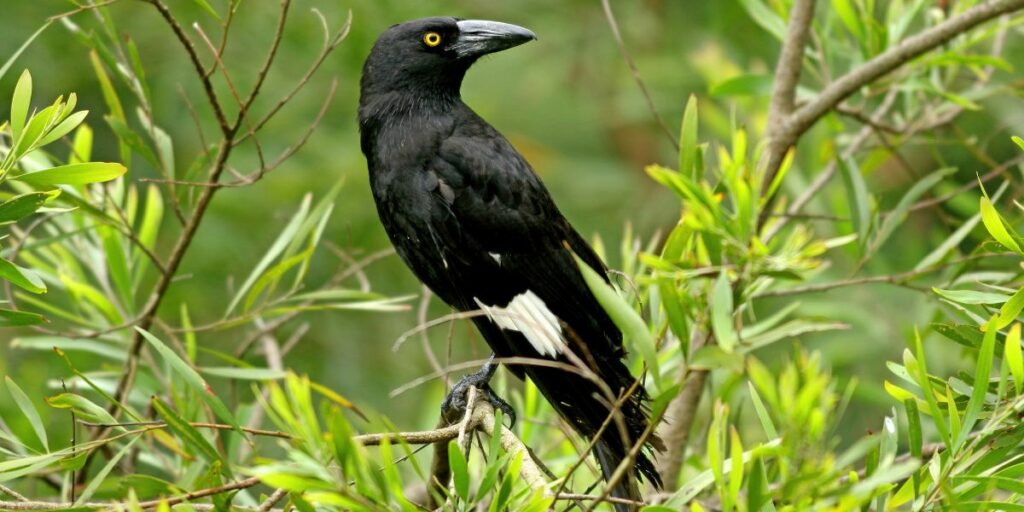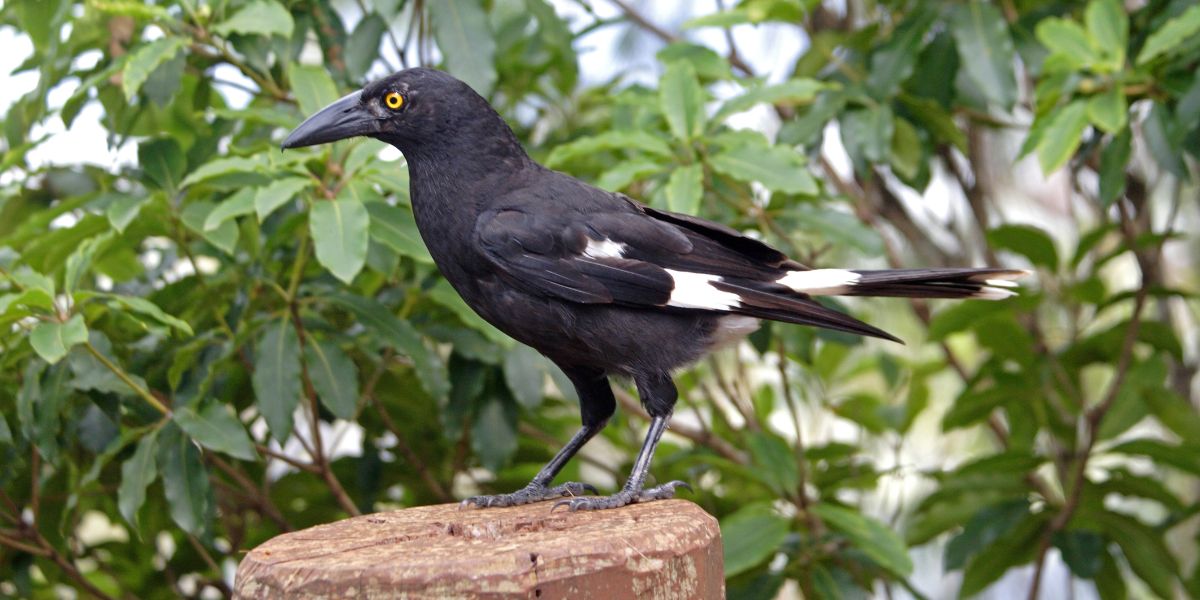Currawongs frequently grace back gardens throughout South East Queensland, Australia, and our garden is no exception when it comes to hosting these avian guests. They visit daily and often in significant numbers. Currawongs can be split into three distinct groups – the Pied, Gray and Black. Our visitors are of the Pied variety.
The birds are a robust medium to large sized bird with distinctive yellow eyes, and a mainly black body plumage with distinctive white patches on the underside of the tail (the base of the tail feathers) and white wing tips that are visible in flight. Some individuals also have white on their nape and back.
Currawongs initially appear somewhat cautious, but they typically do not exhibit aggression towards humans. Over time, as they grow more accustomed to human presence, they become increasingly tame and relaxed.
Unlike some of it’s fellow feathered visitors to our backyard (such as the Lorikeet or Noisy Miner), Currawong’s exhibit a keen sense of sight by catching any offered crumbs or bread crusts in midair, showcasing their agility and precision.
It’s fascinating to see how different species of bird interact, and Currawongs may engage in competitive interactions with other birds, especially over food or territory.
From our observations, Currawongs seem to adopt a subordinate role in the presence of the larger Magpies and Ravens, both species renowned for their assertive behavior and dominance in resource acquisition. This pecking order, though, is not fixed and can fluctuate depending on specific situations and the individual birds in question. Interestingly, we’ve observed that the feisty Lorikeets are not easily intimidated, often standing their ground against the larger Currawongs during disputes over food.
We’ve also noticed a number of Currawongs bearing the mark of survival, with one eye, presumably as a consequence of various incidents. These likely include natural confrontations with other birds, hinting at the challenging and sometimes perilous life these birds navigate in their natural habitats.

Additional Information on Currawongs
- Species Varieties: There are several species of Currawongs, with the Pied Currawong (Strepera graculina), Grey Currawong (Strepera versicolor), and Black Currawong (Strepera fuliginosa) being among the most common. Each species has distinct features but shares the general characteristic of being large, mostly black birds with flashes of white in their plumage, particularly evident in the tail feathers and wing tips in the case of the Pied Currawong.
- Vocalizations: Currawongs are noted for their melodious calls, which are complex and varied. Their songs can be heard throughout the year but are most prominent during the breeding season. These vocalizations play a vital role in communication, including the establishment of territories and attracting mates.
- Diet: Currawongs have a diverse diet that includes fruits, insects, small mammals, and other birds’ eggs and young. This opportunistic feeding behavior allows them to adapt to various environments, including urban areas where they can become quite adept at scavenging food left by humans.
- Behavior and Ecology: Currawongs are highly adaptable and can live in a wide range of habitats, from dense forests to urban areas. They are intelligent birds, capable of using tools and working together to solve problems, especially when foraging for food. During the breeding season, Currawongs become more territorial, and their social structure becomes more apparent, with pairs or small groups defending their nesting sites vigorously.
John Kha did a short Nature documentary on the Currawong if you’d like to see more of this fascinating bird.




